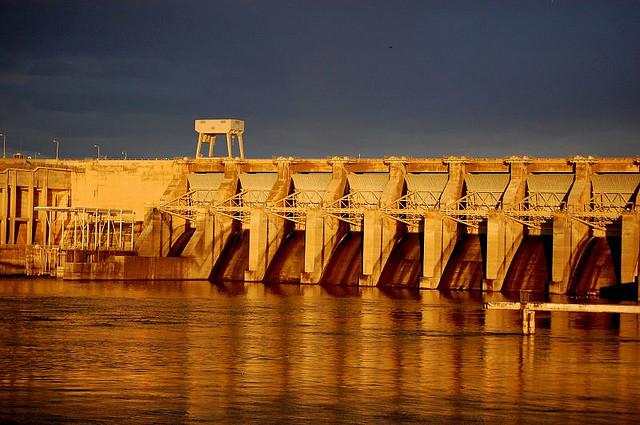
Ice Harbor Dam, one of four such structures on the Lower Snake River in southeastern Washington.
Roberta Schonborg/Flickr / OPB
Northwest dam operations are getting a closer look from federal officials charged with ensuring the survival of imperiled fish that migrate hundreds of miles up the Columbia and Snake rivers to their native Idaho streams
Federal fish managers have released a new recovery plan for threatened spring and summer chinook and steelhead on the Snake River. The plan comes during renewed debate over whether the river's dams should be removed.
The goal of NOAA Fisheries’ plan is to eventually remove the fish from the threatened species list.
Rosemary Furfey, the NOAA Fisheries recovery coordinator for the species, said the proposed plan outlines all the usual suspects for boosting fish recovery, including improved habitat, better fish passage at dams and cooler water temperatures.
“But the recovery plan recognizes we may need to do even more than those,” Furfey said.
One future action: keep an eye on the court-ordered discussion about altering or removing some or all the four lower Snake River dams. Fish managers say the outcome of that debate could spell out some of the biggest changes for fish recovery throughout the system.
The new plan also looks at hatchery management, with more of an emphasis on improving wild fish populations. One way to do that, said NOAA spokesman Michael Milstein: make sure hatcheries breed fish local to the area so they’re better adapted.
Right now, managers estimate it could take between 50 to 100 years to for Snake River spring chinook and steelhead to recover enough for them to be removed from the threatened species list.
People can comment on the plan through Dec. 25.
